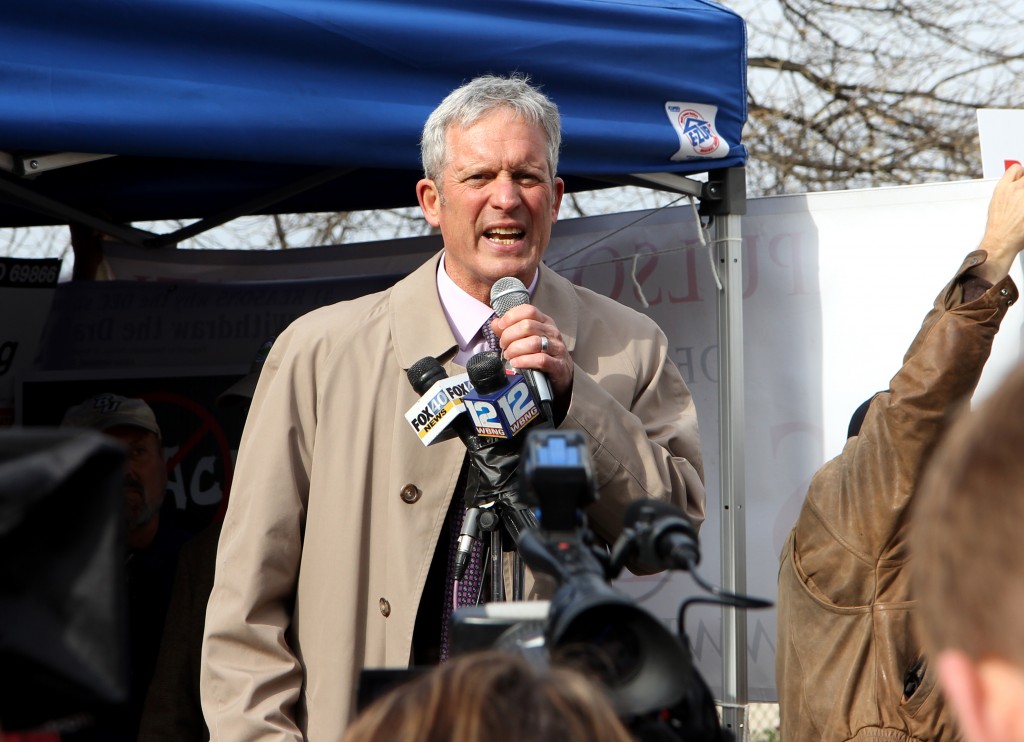
Hydraulic fracturing — rapidly becoming one of the most contentious issues in Albany — may now be limited to five economically struggling counties in the Southern Tier.
If a new plan by Governor Andrew Cuomo’s administration were to pass, the majority of New York state drilling would be in Broome, Chemung, Chenango, Steuben and Tioga counties.
Cuomo’s administration acknowledged the economic needs of the Southern Tier as well as the concerns of some communities about hydrofracking’s potential to contaminate groundwater.
Drilling would only be allowed in communities that agree to it and would be banned in Catskill Park, aquifers and nationally designated historic districts. A 2011 ban on hydrofracking proposed by Binghamton Mayor Matt Ryan and passed by the city council would prevent drilling in Binghamton.
According to a recent New York Times article, the plan would also limit drilling “to the deepest areas of the Marcellus Shale rock formation” in an attempt to avoid groundwater contamination.
The Times reported that Cuomo’s strategic plan has not been finalized and that the details are likely to change. Much of the decision-making depends on state regulators who have the final approval on hydrofracking, and a decision is not expected until late this summer.
Although Binghamton has a ban on hydrofracking, Mayor Matt Ryan, an avid antihydrofracking advocate, disapproved of any drilling in the Southern Tier.
“The last thing we should do is make our communities a sacrificial lamb to the gas industry,” Mayor Ryan wrote in an email. “[Hydrofracking] poses significant risks to our health and safety, and the State has yet to introduce plans that will truly protect us. I’ve been very vocal about this issue because of the effects it would have on us. That’s the right thing to do, and I’ll continue that approach going forward.”
In response to the New York Times article, Representative Maurice Hinchey (D-NY 22nd District) sent a letter to Cuomo commending him for his approach to the issue, but expressed concern about protecting the environment from drilling.
“Shale gas drilling has been proliferating rapidly across the country and, unfortunately, too many states have not taken the necessary steps to protect our communities, water resources, air quality, and public health. New York must not follow this path,” Hinchey wrote to Cuomo. “It is clear that you want to make sure people’s water supplies are protected and I applaud the fact that you and your administration have not stood in the way of local communities that have passed hydraulic fracturing bans.”
New York State Assemblywoman Donna Lupardo of the 126th district, which encompasses Binghamton University, expressed concern about what the Southern Tier could face if drilling is permitted.
“The NY Times article (that discussed a ‘plan’ to limit hydraulic fracturing to portions of ‘several struggling counties’ in the Southern Tier) signals a willingness on the part of the Cuomo administration to honor opposition expressed in many parts of NYS,” Lupardo wrote in an email to Pipe Dream. “My concern is that the Southern Tier may become, by default, an industrial drilling zone for this activity.”
Lupardo, a member of the DEC’s High-Volume Hydraulic Fracturing Advisory Panel, wrote that she believes more review and study about hydrofracking should occur.
“I will continue to advocate for a thorough review of all aspects of high volume hydraulic fracturing including the need for health and cumulative impact studies, and a wastewater treatment and disposal plan,” she wrote.
Broome County Executive Debra Preston, however, supports hydrofracking in the Southern Tier.
“From my time as Town of Conklin Supervisor and now as Broome County Executive, I have made no qualms about my support of Safe Natural Gas Drilling in New York,” Preston wrote in an emailed statement. “Broome County has an eager and talented work force, who are ready to roll up their sleeves and get back into rewarding and well-paying jobs. There is no doubt in my mind that Safe Natural Gas Drilling will mean jobs for Broome County.”
Stacey Duncan, government relations manager of the Greater Binghamton Chamber of Commerce, said hydrofracking is a tremendous economic opportunity.
“We do support shale development,” Duncan said. “It’s beneficial not only for Binghamton, but for the Southern Tier. Locally, we think it presents opportunities for local businesses and it will attract new businesses.”
Local antifracking activist Sue Rapp, a Vestal resident and member of Vestal Residents for Safe Energy (VeRSE), said hydrofracking in the area would have devastating effects.
“In my opinion, the hydrofracking that is planned for our area will have a devastating impact, and it will be especially shocking to students who come to Binghamton to find that it is being turned into an industrial zone, with hazards to air and water and health,” Rapp wrote in an email. “There is no cumulative impact study, so nothing is known about long-term consequences to an area or to a population that undergoes this process.”
Rapp said VeRSE is ready to take action to stop hydrofracking in their community.
“My organization, Vestal Residents for Safe Energy, feels that this is a local issue and should be decided on the local level — we have over 2,000 signatures on a petition for a ban/moratorium in Vestal,” Rapp said. “This represents more than enough people to win or lose an election held for Vestal town board — and we have just begun.”
She added that VeRSE has gone door-to-door in Vestal and has come to the conclusion that the majority of residents do not want drilling here.
“It’s a 24/7 industry and would destroy the quality of life Vestal residents enjoy,” Rapp said. “They fear the health impacts and are concerned about property values — some banks are already denying mortgages on homes with a gas lease or a gas lease near by. We have found residents to be very educated on the issue, much more than a year ago, and they know for instance that currently there is nowhere in NYS to put the toxic, hazardous waste from drilling.”


